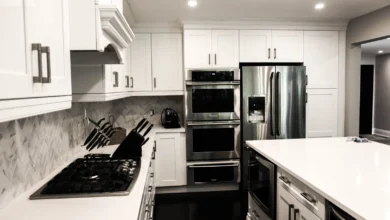Step-by-Step Guide to Solar Panel Installation

Are you considering installing solar panels on your home or business? Solar energy is a clean, renewable source of power that can help you reduce your electricity bills and decrease your carbon footprint. In this article, we will provide you with a step-by-step guide to solar panel installation, from planning and permits to mounting and connecting the panels.
1. Assess Your Energy Needs
The first step in the solar panel installation process is to assess your energy needs. Determine how much electricity you consume on a daily or monthly basis. This will help you figure out how many solar panels you need to install to meet your energy requirements.
The next step is to evaluate your property to determine the best location for solar panel installation. Factors to consider include the angle and orientation of your roof, shading from trees or buildings, and any local regulations or restrictions. Once you have chosen a suitable location, you can proceed with the actual installation of the solar panels.
2. Site Evaluation and Preparation
The next step is to evaluate your site for solar panel installation. Consider factors like the amount of sunlight the location receives, shading from nearby trees or buildings, and the condition of your roof. Prepare the site by cleaning and repairing the roof if necessary.
Evaluate your site by assessing the amount of sunlight it receives throughout the day. Make note of any shading from nearby trees or buildings that may impact your solar panel installation. Additionally, inspect the condition of your roof to ensure it is structurally sound and can support the weight of the solar panels.
Prepare the site by cleaning the roof surface to ensure optimal sunlight absorption. If necessary, make any repairs to the roof to prevent leaks or damage. Proper site preparation is essential to maximize the efficiency and longevity of your solar panel system.
3. Find a Professional Installer
While it is possible to install solar panels on your own, it is recommended to hire a professional installer. They have the expertise and experience to ensure that your solar panels are installed correctly and safely.
Professional installers have the necessary training and knowledge to assess your property for the best placement of solar panels to maximize energy production. They also have access to the proper tools and equipment needed for a successful installation.
Additionally, hiring a professional installer can save you time and hassle, as they will take care of all the necessary permits and paperwork required for a solar panel installation. Overall, choosing a professional installer can help you avoid costly mistakes and ensure that your solar panel system operates efficiently for years to come.
4. Obtain Permits and Approvals
Before you start the installation process, you will need to obtain permits and approvals from your local government or homeowners’ association. Make sure to check the regulations and requirements in your area.
This will help ensure that your installation is done correctly and meets all necessary safety and structural standards. Failure to obtain the proper permits and approvals can result in fines or having to remove the installation altogether. It is always best to be proactive and make sure you have all the necessary permissions before beginning any work.
5. Choose the Right Solar Panels
There are different types of solar panels available in the market, such as monocrystalline, polycrystalline, and thin-film panels. Consider factors like efficiency, durability, and cost when choosing the right solar panels for your installation.
6. Mounting the Solar Panels
Once the site is ready, it’s time to mount the solar panels. The panels can be mounted on the roof using racks or on the ground using pole mounts. Make sure to secure the panels properly to withstand wind and weather conditions. This step is crucial to ensure the efficiency and longevity of your solar panel system. Be sure to follow all manufacturer instructions and guidelines for installation to maximize the performance of your solar panels.
7. Connect the Panels
After mounting the solar panels, you will need to connect them to each other and to an inverter. The inverter converts the direct current (DC) generated by the panels into alternating current (AC) that can be used to power your home or business.
8. Test and Commission the System
Once the panels are connected, test the system to ensure that everything is working properly. You may need to make adjustments or troubleshoot any issues. Once the system is up and running smoothly, you can commission it for regular use.
Conclusion
Installing solar panels can be a great investment for your property. By following this step-by-step guide, you can ensure a smooth and successful installation process. Enjoy the benefits of clean, renewable energy while reducing your environmental impact!




